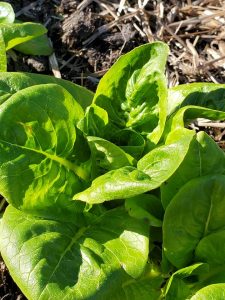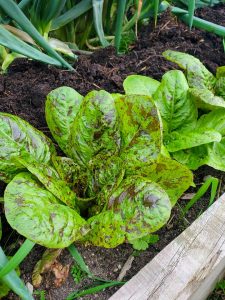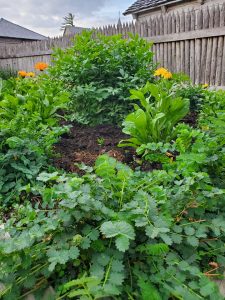 As we know, from 1774 to 1775 John Askin used his journal to record activities in his garden. Another of his frequently-mentioned vegetables remains a staple of meals everywhere today: lettuce.
As we know, from 1774 to 1775 John Askin used his journal to record activities in his garden. Another of his frequently-mentioned vegetables remains a staple of meals everywhere today: lettuce.
Growing food of any sort at Mackinac was not always easy. Jonathan Carver wrote in 1766 that “The land about Michilimackina for some miles has a sandy, dry barren soil, so that the troops and the traders here can scarsly find sufficient for gardens to raise greens on.” The sand meant that the soil was rather poor at the fort, and that made growing many plants very difficult. We know that the people here who chose to garden had to add soil amendments to succeed, and most people relied heavily on whatever foodstuffs they could import. However, certain foods, like lettuce, did not transport well and had to be grown near where they were to be eaten.
In 1775 Askin mentioned planting lettuce on May 2. Shortly after that, on May 10, he “sowed some more lettice.” This sort of staggered planting meant that his household had a steady supply of good lettuce, and did not have had to deal with a surplus at any one time. It was, and quite often is, the common way of growing these sorts of foods. Practicing succession planting ensures that the plants mature one after the other, rather than all at once. It makes it much easier to manage the amounts of produce and avoids any sort of gluts.
Askin never specified the type of lettuce he was growing but there were generally two types: those that would form heads, and those that modern gardeners call “cut and come again.” The “cut and come again” varieties were valued for a steady production of leaves that could be harvested two or three times from the same plant.
Some of the tougher and more bitter lettuces were often blanched in the garden. Blanching is a technique that makes them sweeter by tying the leaves together or covering them with an upturned bucket or flowerpot, or even burying the plants completely to exclude the light. Keeping the light away from them causes them to stop producing chlorophyll and improves the taste, generally making them whiter, sweeter and more tender.
Garden writers from the time recommended that all types of lettuce be planted in a sheltered location to protect them from the wind. At Michilimackinac we certainly get a lot of wind, so we are careful to protect lettuce by placing the plants strategically. Removing the dead leaves and keeping them free from weeds were also common recommendations for a successful crop.
Lettuces were among the most popular vegetables of 18th century English and French gardens. When Pehr Kalm visited Canada and described the food on the table, he mentioned meat, certainly, but also noted that it was eaten “together with different sorts of salads.” He also observed that “carrots, lettice, Turkish beans, cucumbers, and currant shrubs” were “planted in every farmer’s little kitchen garden.” It sounds charming, to be sure, but it was also perennially practical. Easy access to fresh produce is every cook’s dream. Besides salads, some lettuces would be used in soups or sautéed as a tasty side dish.
John Askin’s journal is used as a valuable source of information that can help us understand what it was like to have a garden at Michilimackinac. Be sure to visit Colonial Michilimackinac to see how our plants are growing. Please also consider joining Mackinac Associates, a friends group which supports our gardening activities and programs and exhibits throughout Mackinac State Historic Parks’ sites.










